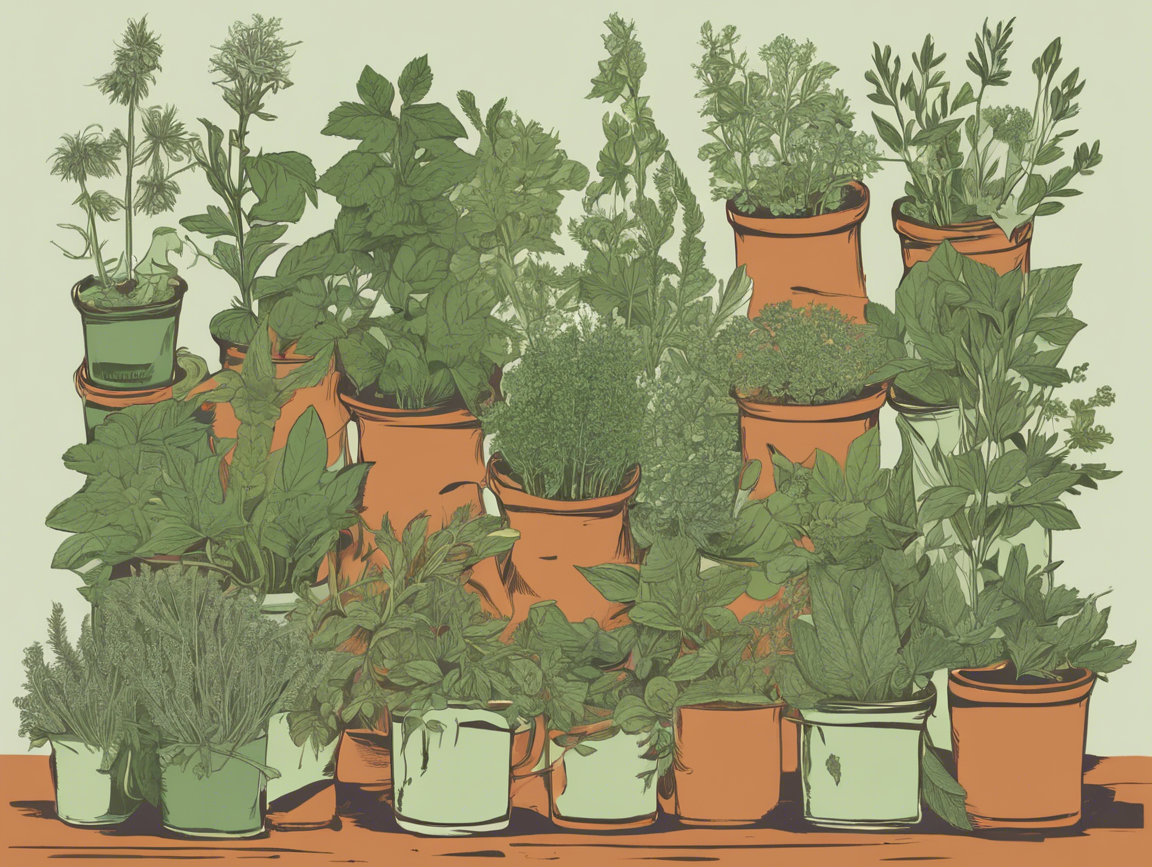In a world dominated by modern medicine, the healing power of local herbs is often overlooked. However, for centuries, people around the globe have been using herbs that grow in their own surroundings to address various health issues. These herbs are rich in nutrients and medicinal properties that can aid in healing and maintaining well-being. In this comprehensive guide, we will explore the diverse world of local herbs and their healing benefits.
The Benefits of Local Herbs
1. Rich in Nutrients
Local herbs are packed with essential nutrients, including vitamins, minerals, and antioxidants that are beneficial for our health.
2. Enhance Immune System
Many local herbs have immune-boosting properties that can help the body fight off infections and diseases.
3. Anti-inflammatory
Certain herbs possess anti-inflammatory properties that can reduce swelling and pain in the body.
4. Digestive Health
Herbs such as peppermint and ginger can aid in digestion and alleviate gastrointestinal issues.
5. Stress Relief
Some local herbs, like chamomile and lavender, have calming effects that can help reduce stress and anxiety.
Popular Local Herbs and Their Healing Properties
1. Aloe Vera
- Healing Properties: Soothes skin irritations, burns, and wounds.
- Internal Benefits: Supports digestion and detoxification.
2. Turmeric
- Healing Properties: Powerful anti-inflammatory and antioxidant effects.
- Internal Benefits: Supports joint health and improves cognitive function.
3. Garlic
- Healing Properties: Boosts immune system and fights infections.
- Internal Benefits: Helps lower cholesterol and blood pressure levels.
4. Echinacea
- Healing Properties: Enhances immune function and reduces the severity of cold symptoms.
- Internal Benefits: Shortens the duration of colds and flu.
5. Ginger
- Healing Properties: Anti-nausea and anti-inflammatory effects.
- Internal Benefits: Improves digestion and reduces muscle pain.
How to Incorporate Local Herbs Into Your Routine
1. Herbal Tea
Brew local herbs like peppermint, chamomile, or lemon balm to enjoy as a soothing and nutrient-rich herbal tea.
2. Cooking
Add fresh herbs like rosemary, thyme, or basil to your cooking to enhance the flavor and nutritional content of your meals.
3. Topical Applications
Create homemade herbal salves, ointments, or poultices using local herbs for skin healing benefits.
4. Aromatherapy
Use essential oils extracted from local herbs in a diffuser or for massage to promote relaxation and wellness.
Frequently Asked Questions (FAQs)
1. Are local herbs safe to use?
Answer: In general, local herbs are safe to use, but it is always recommended to consult with a healthcare professional, especially if you are pregnant, nursing, or taking medications.
2. Can I grow my own local herbs?
Answer: Yes, you can easily grow many local herbs in your garden or in pots on your windowsill. This way, you can have fresh herbs readily available.
3. How do I know which local herbs are best for my specific health concerns?
Answer: Research the properties of different local herbs or consult with an herbalist to determine which herbs may be most beneficial for your health needs.
4. Can I combine different local herbs for increased efficacy?
Answer: Yes, many herbal remedies involve combining multiple herbs for enhanced benefits. However, it is best to do so under the guidance of an herbalist.
5. Are there any side effects to using local herbs?
Answer: While local herbs are generally safe, some people may experience mild side effects such as stomach upset or allergic reactions. It is important to start with small doses and monitor your body’s response.
In conclusion, the healing power of local herbs is a valuable resource that we can harness to support our health and well-being. Whether used in cooking, herbal teas, or topical applications, these herbs offer a natural and nutrient-rich approach to healing and nourishing the body. By incorporating local herbs into our daily routines, we can tap into the benefits of these natural remedies that have been relied upon for generations.
